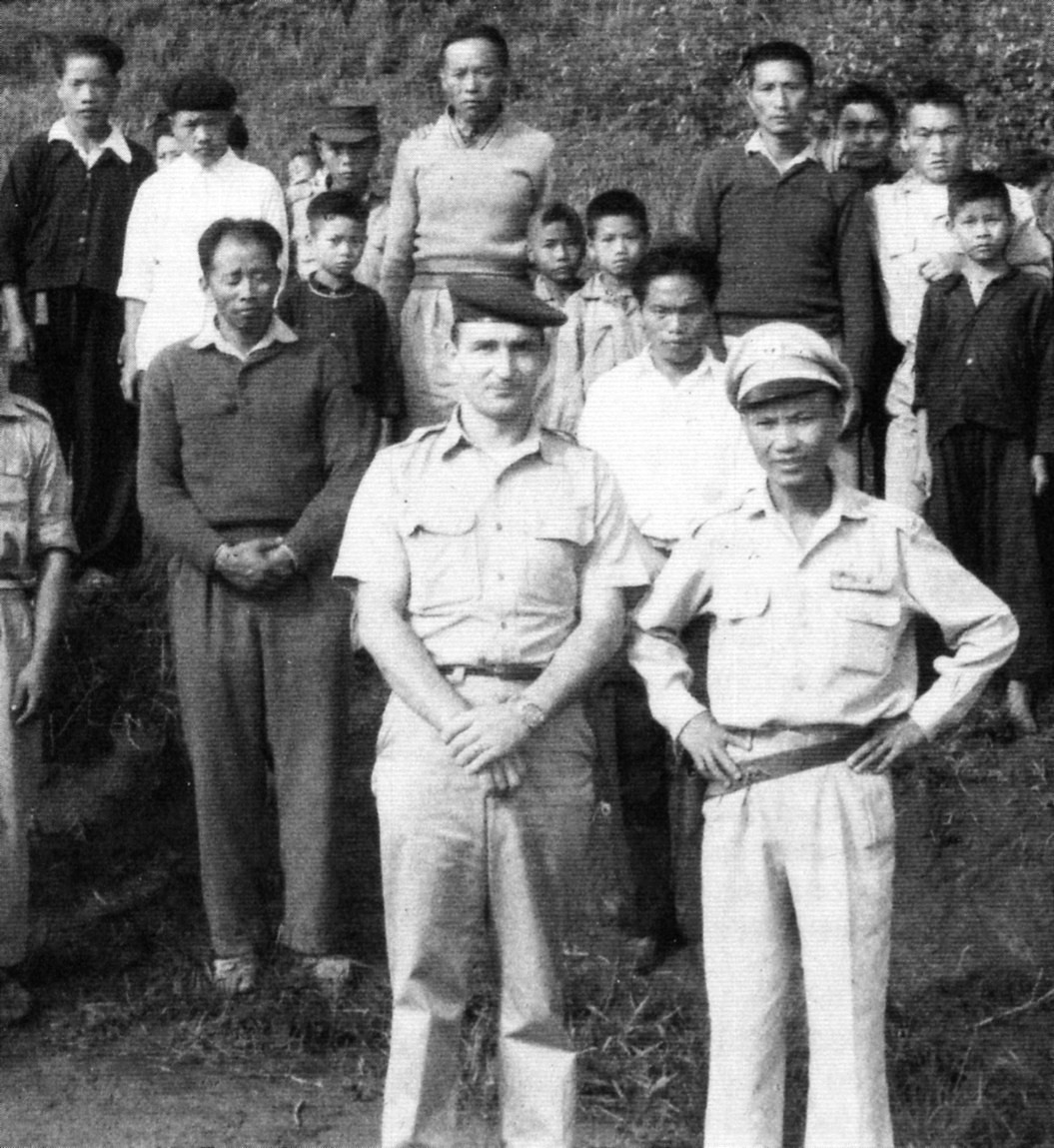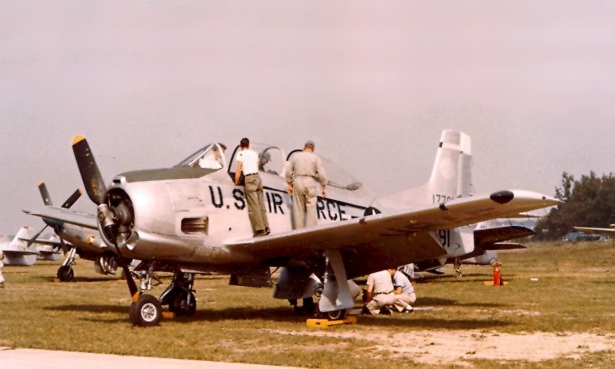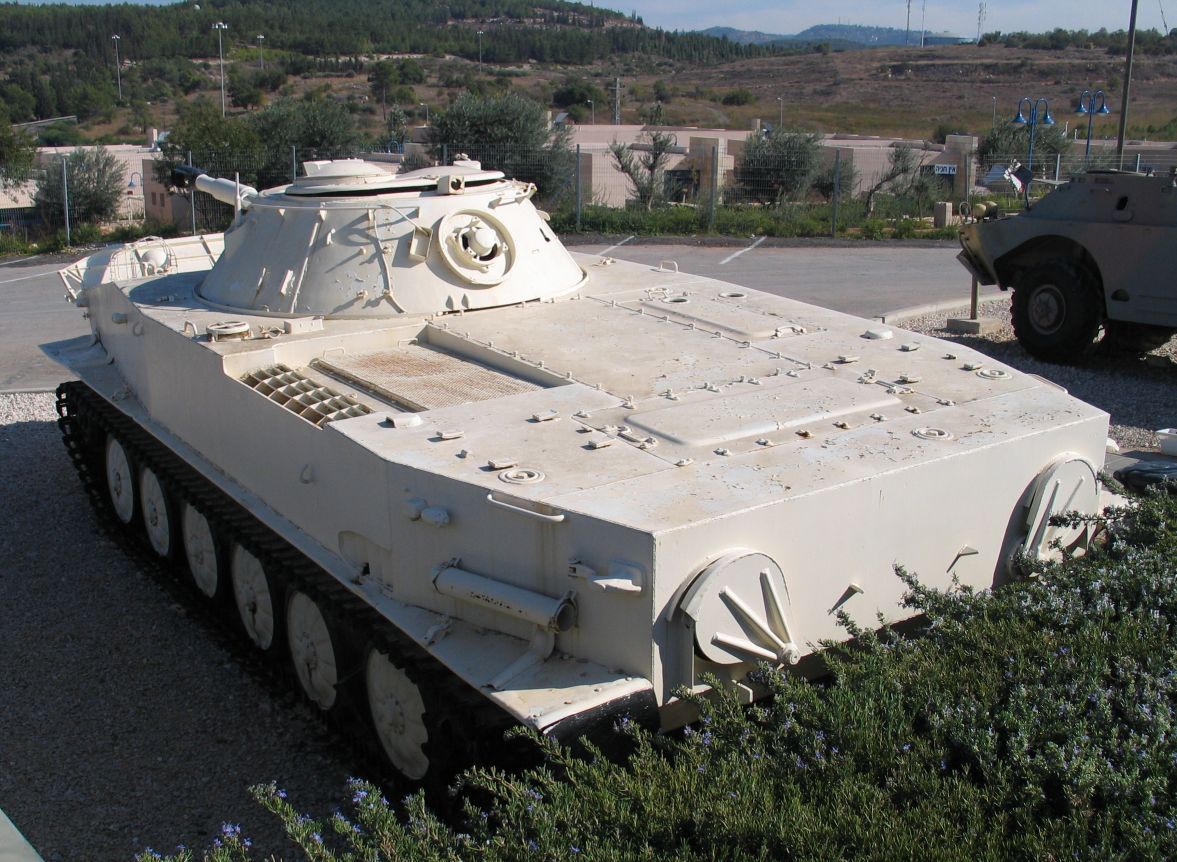|
Campaign 139
Campaign 139 (14 September 1969–25 April 1970) was a major military offensive of the People's Army of Vietnam, launched against its Royalist enemies during the Laotian Civil War. Larger than previous invading forces, Campaign 139 was also a combined arms expedition containing tanks, artillery, engineers, and Dac Cong sappers. As such, it was a decided escalation in the war. It was also an exceptional rainy season offensive by PAVN, which usually withdrew during the wet season. Launched on 14 September 1969 with 60 tanks, 26 PAVN and 10 Pathet Lao battalions, plus supporting units, Campaign 139 drove from the Lao/ DRV border into the strategic Plain of Jars in Military Region 2 of the Kingdom of Laos. The 16,000 plus invaders were opposed by a force of Central Intelligence Agency (CIA) sponsored hill tribes guerrillas some 5,500 to 6,000 strong. Hmong general Vang Pao's ''L'Armee Clandestine'' had just overrun the Plain during Kou Kiet, and the general elected to hold on. H ... [...More Info...] [...Related Items...] OR: [Wikipedia] [Google] [Baidu] |
Laotian Civil War
The Laotian Civil War (1959–1975) was a civil war in Laos which was waged between the Communist Pathet Lao and the Royal Lao Government from 23 May 1959 to 2 December 1975. It is associated with the Cambodian Civil War and the Vietnam War, with both sides receiving heavy external support in a proxy war between the global Cold War superpowers. It is called the Secret War among the American CIA Special Activities Center, and Hmong and Mien veterans of the conflict. The Kingdom of Laos was a covert theater for other belligerents during the Vietnam War. The Franco–Lao Treaty of Amity and Association (signed 22 October 1953) transferred remaining French powers to the Royal Lao Government (except control of military affairs), establishing Laos as an independent member of the French Union. However, this government did not include representatives from the Lao Issara anti-colonial armed nationalist movement. The following years were marked by a rivalry between the neutral ... [...More Info...] [...Related Items...] OR: [Wikipedia] [Google] [Baidu] |
Vang Pao
Vang Pao ( RPA: ''Vaj Pov'' , Lao: ວັງປາວ; 8 December 1929 – 6 January 2011) was a major general in the Royal Lao Army. He was a leader of the Hmong American community in the United States. He was also known as General Vang Pao to the people in the Hmong community. Early life Vang, an ethnic Hmong, was born on 8 December 1929, in a Hmong village named Nonghet, located in Central Xiangkhuang Province, in the northeastern region of Laos, where his father, Neng Chu Vang, was a county leader. Vang began his early life as a farmer until Japanese forces invaded and occupied French Indochina in World War II. His father sent him away to school from the age of 10 to 15 before he launched his military career, joining the French Military to protect fellow Hmong during the Japanese invasion. While taking an entrance examination, the captain who was the proctor realized that Vang knew almost no written French. The captain dictated the answers to Vang so he could ... [...More Info...] [...Related Items...] OR: [Wikipedia] [Google] [Baidu] |
North American T-28 Trojan
The North American Aviation T-28 Trojan is a radial-engine military trainer aircraft manufactured by North American Aviation and used by the United States Air Force and United States Navy beginning in the 1950s. Besides its use as a trainer, the T-28 was successfully employed as a counter-insurgency aircraft, primarily during the Vietnam War. It has continued in civilian use as an aerobatics and warbird performer. Design and development On September 24, 1949, the XT-28 (company designation NA-159) was flown for the first time, designed to replace the T-6 Texan. The T-28A arrived at the Air Proving Ground, Eglin Air Force Base, Florida, in mid-June 1950, for suitability tests as an advanced trainer by the 3200th Fighter Test Squadron, with consideration given to its transition, instrument, and gunnery capabilities. Found satisfactory, a contract was issued and between 1950 and 1957, a total of 1,948 were built. Following the T-28's withdrawal from U.S. military service, ... [...More Info...] [...Related Items...] OR: [Wikipedia] [Google] [Baidu] |
Royal Lao Air Force
The Royal Lao Air Force (french: Aviation Royale Laotiènne – AVRL), best known to the Americans by its English acronym RLAF, was the air force component of the Royal Lao Armed Forces (FAR), the official military of the Royal Lao Government and the Kingdom of Laos during the Laotian Civil War between 1960 and 1975. The original Lao military aviation establishment was the 'Laotian Aviation' (), established by the French on 28 January 1955 as a small aerial observation and transport arm of the then National Lao Army (ANL). As the French withdrew from Indochina, the Lao Aviation was supported by American aid. With the addition of offensive capabilities, it morphed into the Royal Lao Air Force (RLAF). The RLAF struggled into existence in the face of its enemies, while dealing with its own internal divisions as well as bucking a tide of pilot and aircraft losses. As it expanded from its 1960 foundation, and as the fighting power of the Royal Lao Army was diminished and broken du ... [...More Info...] [...Related Items...] OR: [Wikipedia] [Google] [Baidu] |
Auto Defense Choc
The Auto Defense de Choc (ADC) was a militia training program for the Royal Lao Armed Forces. Begun by a French military mission in 1955, its 100-man companies were placed under command of the local Military Region commander when trained. By 1 September 1959, 20 ADC companies were in training, and there were 16,000 ADC soldiers nationwide. When Central Intelligence Agency (CIA) operatives Theodore Shackley, James William Lair and others slipped into the Kingdom of Laos in the early 1960s, they instituted an American version of the ADC dependent on pre-packed airdropped materiel. Using a three-day training schedule in Operation Momentum, Shackley, Lair and others, worked with Vang Pao to raise a guerrilla force of 5,000 troops in several months. The ADC concept's success helped it spread. The Royal Lao Government (RLG) set up its own version. U.S. Special Forces (USSF) copied the ADC for Operation White Star and Operation Pincushion, and to organize the Degar in South Vietnam. In ... [...More Info...] [...Related Items...] OR: [Wikipedia] [Google] [Baidu] |
PT-76
The PT-76 is a Soviet amphibious light tank that was introduced in the early 1950s and soon became the standard reconnaissance tank of the Soviet Army and the other Warsaw Pact armed forces. It was widely exported to other friendly states, like India, Iraq, Syria, North Korea and North Vietnam. The tank's full name is Floating Tank–76 (, ''plavayushchiy tank'', or ). ''76'' stands for the caliber of the main armament: the 76.2 mm D-56T series rifled tank gun. The PT-76 is used in the reconnaissance and fire-support roles. Its chassis served as the basis for a number of other vehicle designs, many of them amphibious, including the BTR-50 armored personnel carrier, the ZSU-23-4 self-propelled antiaircraft gun, the ASU-85 airborne self-propelled gun and the 2K12 Kub anti-aircraft missile launch vehicle. Development After World War II, the concept of light tanks was resurrected in the USSR. They were to be used in reconnaissance units and therefore an amphibious ab ... [...More Info...] [...Related Items...] OR: [Wikipedia] [Google] [Baidu] |
Dac Cong
A sapper, also called a pioneer or combat engineer, is a combatant or soldier who performs a variety of military engineering duties, such as breaching fortifications, demolitions, bridge-building, laying or clearing minefields, preparing field defenses, and road and airfield construction and repair. They are also trained and equipped to serve as provisional infantry, fighting as such as a secondary mission. A sapper's duties facilitate and support movement, defense, and survival of allied forces and impede those of enemies. The term "sapper" is used in the British Army and Commonwealth nations and the U.S. military. The word "sapper" comes from the French word ''sapeur'', itself being derived from the verb ''saper'' (to undermine, to dig under a wall or building to cause its collapse). Historical origin Sapping A sapper, in the sense first used by the French military, was one who dug trenches to allow besieging forces to advance towards the enemy defensive works and forts ... [...More Info...] [...Related Items...] OR: [Wikipedia] [Google] [Baidu] |
316th Division (Vietnam)
The 316th Division or Bông Lau Division (Vietnamese: ''Sư đoàn Bông Lau'', literally: Silvergrass Division) was a division of the People's Army of Vietnam (PAVN). One of the 6 original "Steel and Iron Divisions", it was created in 1951 and consisted of some 10,000 to 15,000 men. First Indochina War The 316th Division was formed in February/March 1951 from various ethnic minorities in the high region bordering Laos and first saw action in April 1951 at the Battle of Mạo Khê. In October 1952 the 316th took part in the attack on Nghia Lo as part of a Viet Minh offensive against French positions on the Red River and in the high region near Laos. In April 1953 the 316th moved towards Xam Neua which was abandoned as indefensible by the French, by 23 April the 316th and 308th had surrounded a French air-land base on the Plain of Jars. From September–November 1953 Regiment 176 from the 316th engaged French GCMA teams in the Song River valley and that were blocking Rou ... [...More Info...] [...Related Items...] OR: [Wikipedia] [Google] [Baidu] |
312th Division (Vietnam)
The 312th Infantry Division is a division of the People's Army of Vietnam (PAVN), first formed in October 1950. It was one of the 6 original "Iron and Steel" Divisions of the Viet Minh. First Indochina War The 312th Division was formed in October 1950 and first saw action in January 1951 at the Battle of Vĩnh Yên. In late April 1953 General Võ Nguyên Giáp ordered the 312th to threaten Luang Prabang, the division reached the outskirts of the capital on 30 April but were then withdrawn back into Tonkin. In November 1953 the 312th was positioned near Phú Thọ to protect against any French action in the Red River region. On 24 December Giap ordered the 312th to move from Phú Thọ to Điện Biên Phủ and by mid January 1954 they were in position in the north-east of the valley. Regiments 141 and 209 of the 312th led the initial attack of the Battle of Dien Bien Phu, overrunning Strongpoint Beatrice in five hours on the night of 13 March 1954. On the evening 14 March ... [...More Info...] [...Related Items...] OR: [Wikipedia] [Google] [Baidu] |
Tony Poe
Anthony Alexander Poshepny (September 18, 1924 – June 27, 2003), known as Tony Poe, was a CIA Paramilitary Operations Officer in what became the Special Activities Division (renamed Special Activities Center in 2016). He was known for his service in Laos with Special Guerilla Units (SGUs) under the command of General Vang Pao, a U.S.-funded secret army in Laos during the Vietnam War, and is recognized as the model for Colonel Kurtz in the movie ''Apocalypse Now''. Early life and career Poshepny was born in Long Beach, California, to John Charles and Isabel M. ( Veriziano) Poshepny. His father was a United States Navy officer whose parents were immigrants from Bohemia. His mother was born in Guam. When he was eight years old, his nine-year-old brother John accidentally shot her in the stomach with the family rifle, and she nearly bled to death. Shortly after turning 18, he enlisted in the United States Marine Corps during World War II, serving in the 2nd Marine Para ... [...More Info...] [...Related Items...] OR: [Wikipedia] [Google] [Baidu] |
Wilbur "Will" Green
Captain Wilbur Murray "Will" Greene (5 September 1930 – 28 April 1972)Conboy, Morrison, p. 354. was from a small town in South Carolina. Greene first served commendably in the U.S. Special Forces, learning Vietnamese while serving in the Vietnam War and the Korean War. He retired after 20 years (1947–1967) to begin a new career as a Paramilitary Officer in the Special Activities Division (renamed Special Activities Center in 2016 ) of the Central Intelligence Agency (CIA). After joining the CIA's Directorate of Operations in 1967, he underwent training before deploying overseas in March 1968. Soon after, his wife died in an auto accident. Greene returned to the U.S. and arranged care for his young children before returning overseas to his assignment. Known by his call sign "Black Lion," Greene remained in the most dangerous forward Hmong outposts even when ordered to evacuate. From there he directed Hmong troops in heavy combat. In one instance, on 2 December 1969, Greene rall ... [...More Info...] [...Related Items...] OR: [Wikipedia] [Google] [Baidu] |
Henry Kissinger
Henry Alfred Kissinger (; ; born Heinz Alfred Kissinger, May 27, 1923) is a German-born American politician, diplomat, and geopolitical consultant who served as United States Secretary of State and National Security Advisor under the presidential administrations of Richard Nixon and Gerald Ford. A Jewish refugee who fled Nazi Germany with his family in 1938, Kissinger excelled academically, receiving his BA degree ''summa cum laude'' from Harvard College in 1950, studying under William Yandell Elliott. He received his MA and PhD degrees at Harvard University in 1951 and 1954, respectively. For his actions negotiating a ceasefire in Vietnam, Kissinger received the 1973 Nobel Peace Prize under controversial circumstances. A practitioner of '' Realpolitik'', Kissinger played a prominent role in United States foreign policy between 1969 and 1977, pioneering the policy of détente with the Soviet Union, orchestrating an opening of relations with the People's Republic of China ... [...More Info...] [...Related Items...] OR: [Wikipedia] [Google] [Baidu] |






.jpg)